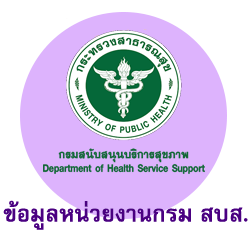Tuberculosis Prevention and Control in the Immigration Detention Center
Keywords:
Prevention and Control, Tuberculosis, Detention CenterAbstract
Tuberculosis is the major communicable disease which is globally to be the public health problem in prisons and other cells which situated in the Immigration detention center, the main unit for detaining immigrants who did illegally and were acquittal including waiting for repatriation. Most of them illegally immigrated. Immigration detention center has any high risks for tuberculosis spread if there is tuberculosis case detained in the area. The objectives of this research were to explore tuberculosis situation, to study prevention and control operation and to examine problems and difficulties in operation in order to find appropriate guideline for tuberculosis prevention and control in the Immigration Detention Center. The samples were 3,407 immigrants detained in the immigration detention center for at least 1 year or others who were suspected Tuberculosis cases. The instruments were TB screening record form, diagnostic and medical summary report from referred hospital. Moreover, we used the disease prevention and control measures. The results showed that This screening during the period of 1 January 2013 – 31 December 2015, the participants were 3,407 detainees . It was found that there were 12 Tb cases, 5 males and 7 females. There were 8 cases with completed treatment and 4 cases with incomplete treatment due to sending back to their home countries. Active case finding through screening were used for tuberculosis prevention and control. Diagnosis and treatment were followed by the referred hospital, the General Police Hospital and Saint Louis Hospital .. The TB cases were isolated in the private zone in the same room but they can not be isolated in the single room because of limited room. DOTs used coordination with the room leader to closely monitor them to take the medicine. The problems and obstacles for implementation were mainly from Language for communication, collaboration for implementation, place limitation ,and staff shortage. Therefore, continuous case findings through immigrant screening is the best method for helping the immigrants to early receive the treatment, reduce the spread of infection, decrease the mortality rate, and minimize the drug resistant problem. Furthermore, cross border referral should be done if there were Tuberculosis cases with incomplete treatment due to sending back to their home countries including model development for effective prevention and control should be studied.
References
Aerts, A., Hauer, B., Wanlin, M., Veen, J. (2006). Tuberculosis and Tuberculosis control in European prisons. International Journal of Tuberculosis and Lung Disease, 10: 1215-1223.
Centers for Disease Control and Prevention. [CDC], (2006). Prevention and Control of Tuberculosis in Correctional and Detention facilities: Recommendation from CDC,55(RR09),1-44. Retreived March 1,2017 from https://www.cdc.gov/mmwr/preview/mwrhtml/rr5509a1.htm?s_cid=rr509a1_e.com
Cheewakriengkrai, S. (2004). A manual for health care operation in the Immigration Detention center. Bangkok: International communicable Disease Control Group, Bureau of General Communicable Diseases.
Hutchison, D.C.S., Drobniewski, F.A., Miburn, H.J. (2003). Management of multiple drug–resistant Tuberculosis, Respir Med, 97(1), 65-70.
Jittimanee, S., Ngamtrairai, N., White, M., Jittimanee, S. (2007). A Prevalence Survey for smear–positive Tuberculosis in Thai Prisons. International Journal Tuberculosis and Lung Disease, 11: 556-561.
Jittimanee, S., Ngamtrairai, N. (2009). Guideline for Tuberculosis Control Implementation In Thai prisons. Bangkok: Bureau of Tuberculosis, Department of Disease Control.
Jitwiwat, W., Ngamtrairai, N., Soymoree, B. (2005). Model development for Tuberculosis Diagnosis in prisons. Thai journal of tuberculosis chest diseases and critical care. 26(3): 175-184.
Kamolrattanakul, P. (2001). Tuberculosis Control Model in Thai prisons. Bangkok: Chulalongkorn University.
Lobacheve, T., Asikainen,T., Giesecke, I. (2007). Risk Factors for Developing Tuberculosis in remand persons in St. Peterburg, Russia- a case–control study. European Journal of Epidemiology, 22: 121-127.
Miller, TL., Hilsenrath, P., Lykens, K., McNabb, S.J..N., Moonan, P.K., Weis, S.E. (2006). Using Cost and Health impacts to prioritize the targeted testing of Tuberculosis in the United States. Annuals of Epidemiology, 16:305-312.
Ngamtrairai, N. (2003). The effects of supportive educative nursing system on self care of pulmonary tuberculosis prisoners.(Master of Science (Public Health) Thesis). Mahidol University.
World Health Organization. WHO Report 2009 Global Tuberculosis control-surveillance, Planning, Financing.2009 [Cited 2016 Aug 15]. Available from http:// www.who.int/countries/tha/en/
World Health Organization. (2012). Global Tuberculosis report 2012. Retrieved March 1, 2017, from http://www.who.int/tb/publications/global_report/gtbr12_main.Pdf.
Wong, M., Leung, C., Tam,C., Kam, K., Ma, C., Au,K. (2008). TB Surveillance in Correctional Institutions in Hong Kong, (1999-2005). The International Journal of Tuberculosis and Lung Disease, 12: 93-98
Downloads
Published
How to Cite
Issue
Section
License
Copyright (c) 2019 Journal of Department of Health Service Support-วารสารวิชาการกรมสนับสนุนบริการสุขภาพ

This work is licensed under a Creative Commons Attribution-NonCommercial-NoDerivatives 4.0 International License.



